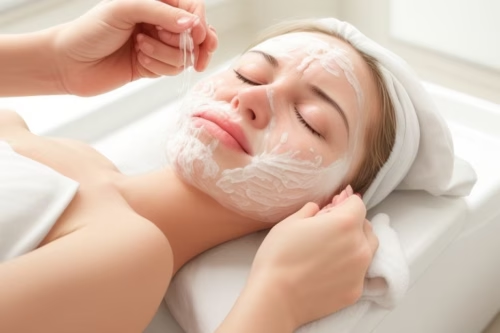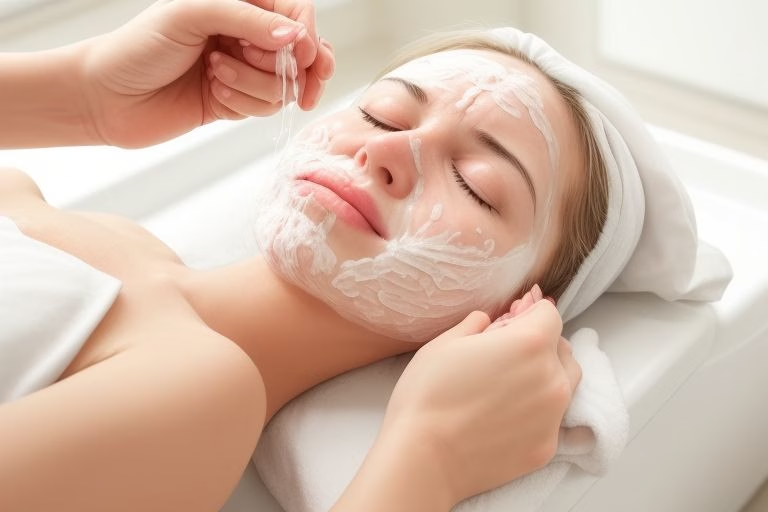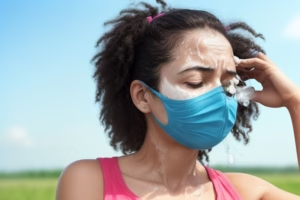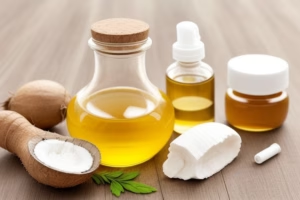What You Need to Know About Mono Skin Rash
Experiencing a mono skin rash can be uncomfortable and worrying, especially if you're unfamiliar with what it is or how to treat it. While the rash itself is a common symptom of infectious mononucleosis (often called mono), understanding its causes and effective treatments is essential for quick relief.

In this guide, we'll dive deep into the best ways to manage and treat mono skin rashes. Whether you're dealing with discomfort or seeking preventative tips, you'll find expert advice and actionable steps to take. Plus, we'll reveal some hidden truths and proven treatments to speed up recovery. Let's jump right in!
What is a Mono Skin Rash? – Understanding the Condition
A mono skin rash is commonly associated with the viral infection, mononucleosis, which is often caused by the Epstein-Barr virus (EBV). It typically appears during the later stages of the infection and may last from a few days to weeks. The rash often consists of flat, red patches and may sometimes include bumps or hives.
Symptoms of Mono Skin Rash:
- Red or blotchy patches
- Itchy skin
- Swelling or inflamed skin
- Skin irritation or dryness
- Sometimes accompanied by fever, sore throat, or swollen lymph nodes
Understanding these symptoms is crucial to diagnosing the rash as part of mono. If you notice these signs, it’s important to seek medical attention to confirm the diagnosis and discuss the best course of action for treatment.
7 Proven Ways to Treat Mono Skin Rash
Now that you know what a mono skin rash is, let's explore the 7 most effective ways to treat it. These treatments are designed to relieve itching, reduce swelling, and speed up recovery.
1. Apply Cold Compresses for Immediate Relief
One of the easiest and quickest ways to soothe a mono skin rash is by using a cold compress. The cold temperature helps reduce inflammation and alleviate itching. Simply place a clean cloth soaked in cold water over the affected areas for 10-15 minutes, several times a day.
2. Use Anti-Itch Creams and Lotions
Over-the-counter anti-itch creams can work wonders for calming the skin. Look for products containing hydrocortisone or calamine lotion. These can help reduce itching and irritation, allowing you to get some much-needed relief from the discomfort of the rash.
3. Take Antihistamines for Allergy-like Symptoms
In some cases, the rash may behave like an allergic reaction. If your mono skin rash causes excessive itching or swelling, antihistamines like Benadryl can help alleviate these symptoms. Always consult with your doctor before using any medications, especially if you are taking other prescription drugs.
4. Hydrate and Moisturize the Skin
Dry, flaky skin can worsen the appearance of a rash. Staying hydrated and using a gentle, fragrance-free moisturizer can prevent further skin irritation and promote faster healing. Aloe vera gel is particularly effective in soothing irritated skin and reducing inflammation.
5. Avoid Scratching and Irritating the Rash
While it may be tempting to scratch the rash, doing so can worsen the condition. Scratching can lead to infection and scarring. To avoid this, wear loose, breathable clothing and try to distract yourself with other activities to resist the urge to scratch.
6. Use Natural Remedies like Oatmeal Baths
An oatmeal bath is another excellent natural remedy for soothing a mono skin rash. Oatmeal has anti-inflammatory properties that help calm itching and irritation. You can add finely ground oatmeal to lukewarm bath water and soak for 15-20 minutes. This will hydrate the skin and provide immediate relief.
7. Seek Medical Advice for Prescription Treatment
If your rash is severe or doesn't improve with home treatments, it's important to consult a healthcare provider. Your doctor may prescribe corticosteroids or other medications to reduce inflammation and speed up healing.
Why Do Mono Skin Rashes Appear? – Uncovering the Root Causes
A mono skin rash is often a reaction to the Epstein-Barr virus (EBV), which is responsible for mononucleosis. The virus primarily spreads through saliva and affects the immune system, leading to symptoms like fatigue, fever, and a sore throat. The rash usually appears as the immune system reacts to the viral infection.
In some cases, taking antibiotics like amoxicillin during mono can trigger a rash. It’s essential to avoid this medication if diagnosed with mono, as it can worsen the skin rash.
Mono Skin Rash Prevention – Can You Avoid It?
While you can’t completely prevent a mono skin rash from occurring if you contract mononucleosis, there are a few steps you can take to reduce the likelihood of developing the rash:
- Avoid sharing personal items like drinks, utensils, and toothbrushes to prevent the spread of the Epstein-Barr virus.
- Maintain a strong immune system by eating a balanced diet, exercising, and getting enough sleep.
- Practice good hygiene to prevent infections and limit exposure to viruses.
FAQs About Mono Skin Rash
Q1: How long does a mono skin rash last?
A: The rash usually lasts between a few days to several weeks, depending on the severity and how well it's treated.
Q2: Is a mono skin rash contagious?
A: The rash itself is not contagious, but the Epstein-Barr virus that causes mono can spread through saliva and close contact.
Q3: Can you get a mono skin rash without having mono?
A: No, a mono skin rash typically occurs as part of mononucleosis. If you have the rash but no other symptoms of mono, it could be due to another underlying condition.
Conclusion: Fast Relief for Mono Skin Rash – Try These Tips Today!
A mono skin rash can be frustrating, but with the right treatments and a bit of patience, it’s possible to find fast relief. Whether you're using cold compresses, moisturizing regularly, or seeking medical advice for prescription treatments, these strategies can help ease the discomfort.
Remember, if you're ever uncertain or if your symptoms worsen, don’t hesitate to contact a healthcare provider. Quick action and the right treatment are key to managing the rash and recovering as quickly as possible.
Want to learn more about skin health and other common conditions? Subscribe to our newsletter for expert tips, home remedies, and health insights delivered straight to your inbox!



